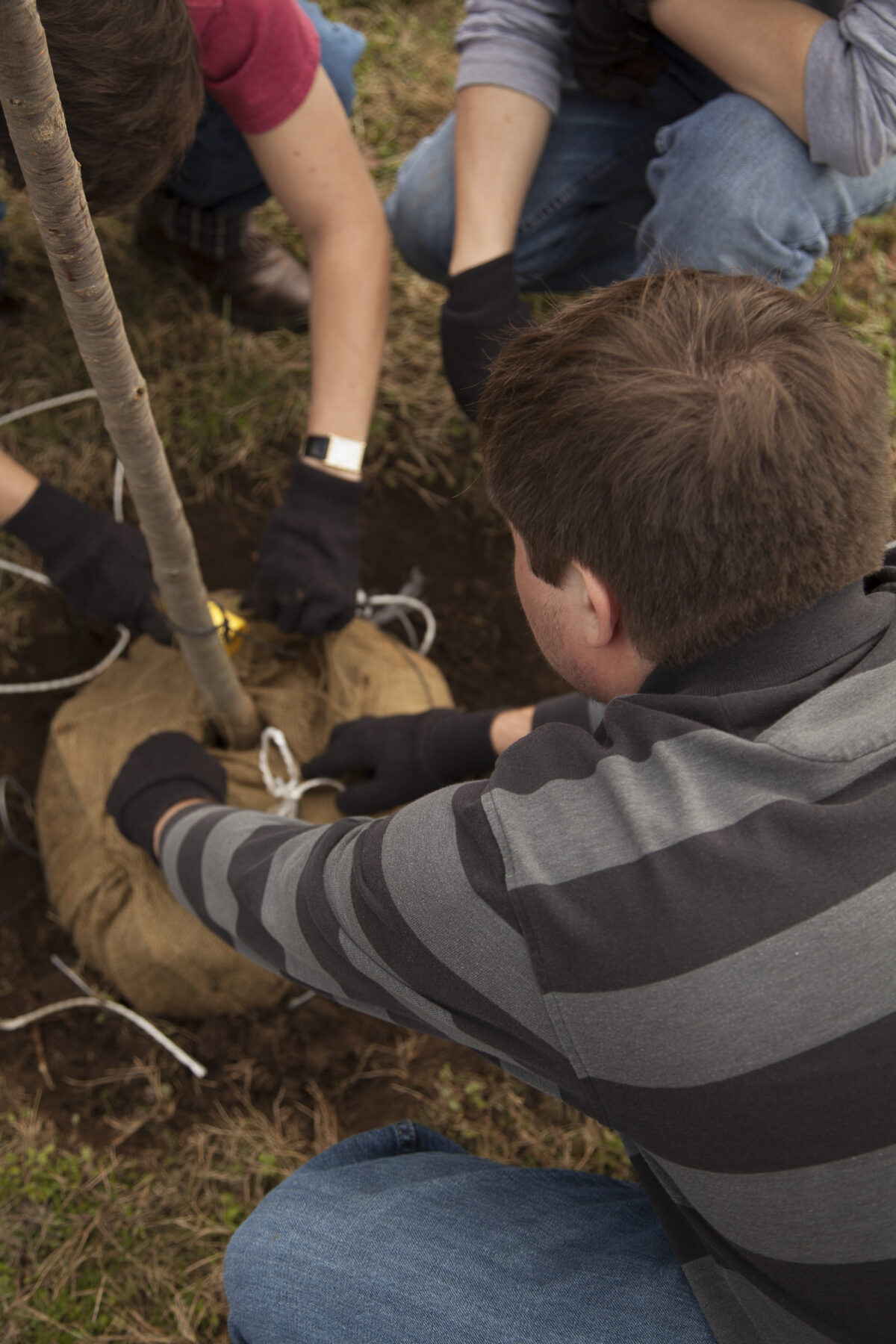Fall’s mild temperatures and wetter weather make for the perfect time to plant trees. Because the days are shorter and cooler, newly-planted trees require less water, their root system grows more quickly and they are better equipped to deal with heat and drought the following season.
Tree species that are recommended for fall planting include the maple, buckeye, horse chestnut, alder, hackberry, hawthorn, ash, honey locust, crabapple, spruce, pine, sycamore, linden and elm. Avoid planting broad-leaved evergreens in the fall such as rhododendrons, azaleas, boxwoods and hollies.
Call 811 Before You Dig
Before you start any planting project, be sure to call 811 to learn where underground lines, pipes and cables are buried in your yard.
Select the Right Tree or Shrub
Watch our Right Tree Right Place video to help you select the right tree for the right place on your property. By planning for the tree’s growth, you help to prevent outages caused by limbs growing into power lines and reduce the need for tree trimming in the future.
- Be sure to look up and around. Trees grow to varying heights and spread at their maturity.
- Consider the location relative to nearby power lines and electrical equipment. Trees and shrubs should be planted so they will not grow within a 10-foot radius of NES poles and equipment.
- Analyze the condition of your lot, including soil conditions and drainage.
- Determine your planting goal: shade, flowers or leaves, fruit or visual screening.
Planting Guidelines
You only get one shot at planting a tree properly, so do it right the first time.
- Dig a hole as deep as the root ball and twice as wide.
- Remove the tree from its container, burlap wrap or metal basket and get rid of any excess soil from the top of the root ball that is covering the tree’s primary lateral roots.
- After your tree is in the ground, add a layer of mulch to protect the roots. Mulch near the trunk should be approximately one inch deep, while mulch toward the edge of the mulch ring can be up to four inches deep.
- Trees that are tall and leggy or in high wind areas should be staked in order to anchor the root ball and prevent newly developed roots from breaking.
- Be sure to water your tree the day after planting, three days later and three days after that. Continue monitoring your newly planted tree to be sure it doesn’t get too dry but avoid over-watering.
Now that you’ve found the right tree for the right place at your home, join us for ReLeafing Day on Saturday, November 19 as we plant more than a hundred powerline-friendly trees in Northwest Nashville. If you’re interested in volunteering, visit nashvilletreefoundation.org/releafing.
Tags:
